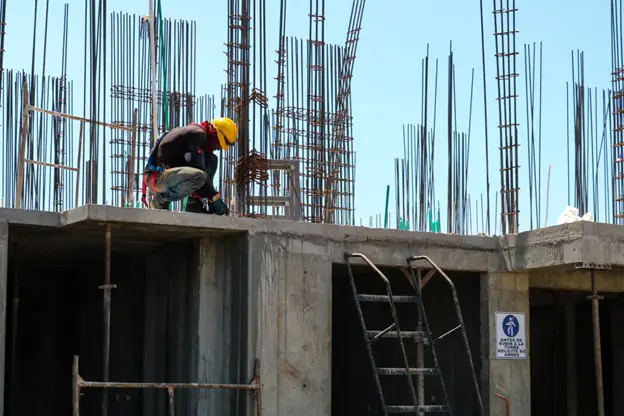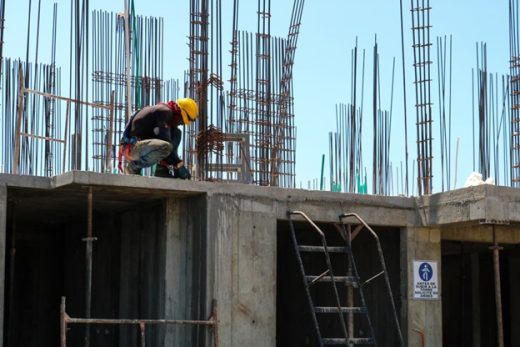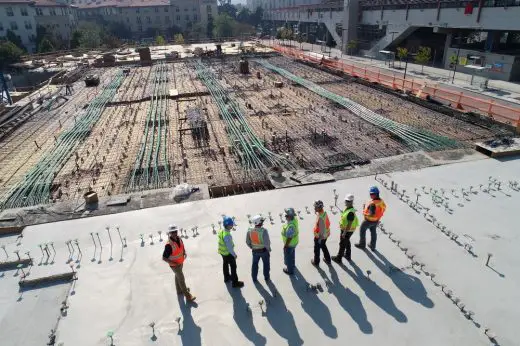Building construction site safety awareness guide, Contractor H&S advice, Build hazards
Building a Culture of Safety Awareness on Construction Sites
8 July 2024
Empowering Workers: Building a Culture of Safety Awareness on Construction Sites
Construction sites are a constant dance with danger. Workers navigate a complex web of hazards daily from perilous heights to unforgiving machinery. While regulations and safety protocols are essential, a genuinely safe work environment requires a deeper commitment – a culture of safety awareness built on the bedrock of empowered workers.
Today, let’s explore the transformative power of empowering workers as a cornerstone for robust safety practices on construction sites. We’ll delve into the benefits of this approach, examine practical steps for implementation, and highlight the crucial role of leadership in fostering a safety-conscious workforce.
Beyond Compliance: The Power of Empowerment
Traditional safety approaches often rely on a top-down structure, emphasising compliance with regulations. While crucial, this can foster a culture of fear and a focus on avoiding penalties instead of genuine understanding. Empowering workers, however, flips the script.
Empowerment goes beyond simply providing workers with safety knowledge. It equips them with the resources and confidence to actively participate in creating a safe environment. This fosters a sense of ownership and accountability, where workers become proactive in identifying and mitigating hazards. Imagine a welder not just following the rules about using a face shield but also understanding the different welding hazards and actively participating in discussions about ventilation and fire safety at the welding station.
Additionally, having clear and well-defined perimeters established with temporary fencing products from companies like WA Temporary Fencing Supplies can enhance safety by controlling access and preventing unauthorised entry to hazardous areas. This shift from passive compliance to active engagement is the essence of empowerment.
Transforming the Landscape: Practical Steps for Empowerment
Building an empowered workforce requires a sustained effort from leadership. Here’s how companies can create a thriving safety culture:
Investing in Knowledge
Comprehensive safety training programs go beyond the basics. Workers should understand safe work practices and hazard identification and be encouraged to participate in safety discussions and offer solutions. Training programs should be interactive and tailored to different job roles’ specific needs and risks. For example, electricians might receive additional training on electrical safety procedures beyond what general construction workers require.
Open Communication Channels
It is vital to provide a safe space for workers to report concerns. This could include anonymous reporting systems, dedicated safety committees, or open-door policies with management. Encouraging open communication fosters trust and allows for a proactive approach to addressing issues. Consider implementing multiple reporting channels, catering to different worker preferences. Some might feel comfortable reporting anonymously through an app, while others prefer face-to-face conversations with safety committee members.
Recognition and Rewards
Positive reinforcement goes a long way. Recognizing workers who demonstrate safe practices and actively contribute to safety improvements reinforces positive behaviour and motivates others to follow suit. This recognition can be public or private, depending on worker preferences. Public recognition during team meetings can boost morale and inspire others, while private recognition can acknowledge individual contributions and provide meaningful feedback.
Including Workers in the Conversation
When developing safety protocols and conducting risk assessments, involve workers from all levels. This not only gives them a sense of ownership but also allows for valuable frontline insights to shape safety strategies. Imagine a team of workers participating in a pre-construction safety meeting, discussing potential hazards specific to the project site and offering suggestions for mitigating those risks. This collaborative approach ensures that safety protocols are practical and address the project’s specific challenges.
Leading by Example
Actions speak louder than words. Leaders at all levels must demonstrate unwavering commitment to safety by consistently complying with regulations, participating in safety initiatives, and setting an example of safe work practices. A safety manager who consistently wears proper PPE and follows safe work procedures sends a powerful message to workers about the importance of safety. Leaders who prioritise safety meetings and actively participate in safety discussions demonstrate their commitment and inspire workers to do the same.
The Leadership Mantle: Fostering a Culture of Safety
Leadership plays a crucial role in shaping safety culture on construction sites. Here’s how leaders can empower their workforce and cultivate a safety-conscious environment:
- Articulate Safety Values: Communicate the company’s unwavering commitment to safety. Make safety a core value that stands alongside project goals and quality. Leaders should consistently emphasise the importance of safety in all company communications, from project planning meetings to team briefings. This reinforces the message that safety is not an afterthought but a core value guiding all construction operations.
- Measurable Safety Goals: Establish clear and measurable safety goals. Regularly track progress, acknowledge achievements, and address shortcomings with transparency. This ongoing evaluation allows for continuous improvement of safety practices. Setting specific safety goals, such as reducing near misses or lost workdays due to injury, provides a clear benchmark for measuring progress and identifying areas for improvement. Regularly communicating safety performance data to workers demonstrates transparency and encourages a collective effort toward achieving safety goals.
- Investing in Resources: Allocate necessary resources for safety programs, training, and state-of-the-art equipment. This demonstrates commitment and ensures workers have the tools to work safely and efficiently. Providing high-quality personal protective equipment (PPE), proper tools and machinery, and well-maintained work environments demonstrates a commitment to worker safety and minimises the risk of accidents.
- Accountability for All: A culture of safety requires accountability across all levels. Hold everyone, including leaders, accountable for upholding safety protocols. Address violations fairly and consistently to maintain a climate of trust and respect. Enforcing safety rules for everyone, regardless of position, demonstrates fairness and reinforces the importance of safety as a shared responsibility. When leaders are held accountable for their safety behaviour, it sets a positive example for all workers.
Final Words
Empowering workers is not a quick fix; it’s a transformative journey toward a safety culture where everyone feels invested in preventing accidents. Companies can create a fortress of safety on construction sites by fostering a sense of ownership, promoting open communication, and involving workers in safety decisions. Remember, safety is not just a priority. It’s a core value that should permeate every aspect of construction operations.
Comments on this guide to Building construction site safety awareness article are welcome.
Construction Safety
Construction Safety Posts
Common construction site injuries
Construction industry health and safety importance
Why Construction Safety Is Important
Building Articles
Residential Architecture
Comments / photos for the Building construction site safety awareness advice page welcome.







